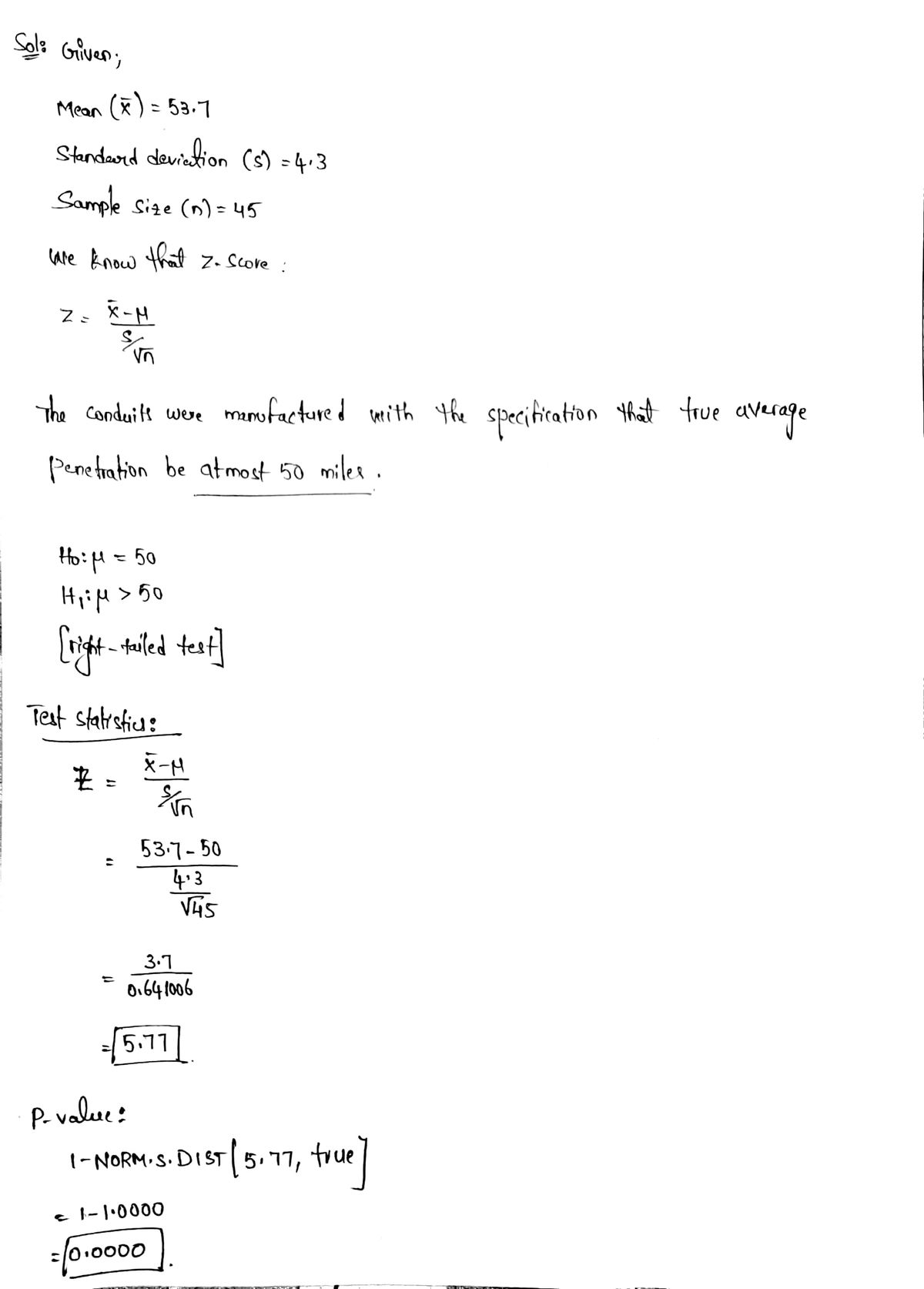To obtain information on the corrosion-resistance properties of a certain type of steel conduit, 45 specimens are buried in soil for a 2-year period. The maximum penetration (in mils) for each specimen is then measured, yielding a sample average penetration of x = 53.7 and a sample standard deviation of s = 4.3. The conduits were manufactured with the specification that true average penetration be at most 50 mils. They will be used unless it can be demonstrated conclusively that the specification has not been met. What would you conclude? (Use ? = 0.05.)
To obtain information on the corrosion-resistance properties of a certain type of steel conduit, 45 specimens are buried in soil for a 2-year period. The maximum penetration (in mils) for each specimen is then measured, yielding a sample average penetration of x = 53.7 and a sample standard deviation of s = 4.3. The conduits were manufactured with the specification that true average penetration be at most 50 mils. They will be used unless it can be demonstrated conclusively that the specification has not been met. What would you conclude? (Use ? = 0.05.)
State the appropriate null and alternative hypotheses.
Ha: ? ≠ 50H0: ? = 50
Ha: ? > 50 H0: ? ≠ 50
Ha: ? > 50H0: ? > 50
Ha: ? = 50
Calculate the test statistic and determine the P-value. (Round your test statistic to two decimal places and your P-value to four decimal places.)
| z | = | |
| P-value | = |
State the conclusion in the problem context.

Step by step
Solved in 2 steps with 1 images









